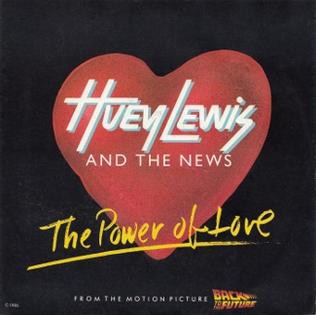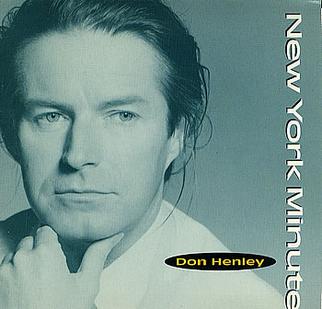Few songs in music history have had the cultural impact, genre-defying influence, and sheer audacity of “Walk This Way” by Aerosmith and Run-DMC. Originally released by Aerosmith in 1975 and famously reimagined in 1986 as a collaboration with hip-hop pioneers Run-DMC, the track became more than just a chart-topping hit—it was a landmark moment that bridged two seemingly disparate musical worlds: rock and hip-hop. The story of “Walk This Way” is a testament to innovation, collaboration, and the power of music to transcend boundaries.
This article explores the origins, creation, musical composition, cultural impact, and enduring legacy of “Walk This Way”, highlighting why it remains one of the most iconic cross-genre songs in music history.
Aerosmith’s Original Version: Setting the Stage
“Walk This Way” was originally recorded by Aerosmith and appeared on their 1975 album Toys in the Attic. Written by Steven Tyler and Joe Perry, the song features one of rock’s most recognizable guitar riffs and Tyler’s signature vocal energy. The original track, a fusion of blues-rock swagger and playful lyricism, tells a humorous and slightly risqué story, complete with Tyler’s signature screeching vocals and Perry’s crunchy, syncopated guitar riffs.
From the outset, the song exemplified Aerosmith’s ability to blend storytelling with raw musical power. The riff-driven intro immediately captures attention, while the rhythm section locks into a tight groove, making the song irresistibly danceable despite its rock edge. Lyrically, it reflected the band’s playful, rebellious spirit, incorporating innuendo and humor that became trademarks of Aerosmith’s early work.
While the 1975 version was a success in the rock world, it didn’t achieve the level of mainstream, cross-cultural recognition that the later 1986 collaboration would bring. Nevertheless, the original laid the groundwork for what would become one of the most iconic musical collaborations of the 20th century.
Run-DMC and the Rise of Hip-Hop
By the mid-1980s, Run-DMC—consisting of Joseph “Run” Simmons, Darryl “DMC” McDaniels, and Jason “Jam Master Jay” Mizell—was revolutionizing the hip-hop landscape. Known for their aggressive delivery, minimalist beats, and streetwise lyrics, the group had transformed rap from a niche genre into a mainstream force. Run-DMC’s music emphasized rhythm, wordplay, and attitude, laying the foundation for the future of hip-hop.
Run-DMC’s innovative approach often involved borrowing from rock music, but until 1986, collaborations between rap and rock artists were rare. When the idea of reimagining “Walk This Way” came about, it represented not just a musical experiment but a potential cultural milestone, one that would challenge assumptions about genre boundaries and musical possibilities.
The Collaboration: How It Came Together
The collaboration between Aerosmith and Run-DMC was orchestrated by producer Rick Rubin, who was instrumental in bridging rock and hip-hop in the 1980s. Rubin, co-founder of Def Jam Recordings, recognized the potential of pairing Run-DMC’s raw rap energy with Aerosmith’s classic rock sound. He suggested re-recording “Walk This Way” with Run-DMC, a proposal that initially met with skepticism.
Aerosmith, at the time struggling with substance abuse and a declining career, was hesitant, while Run-DMC worried that rock audiences wouldn’t embrace a rap version. Despite these concerns, Rubin’s vision prevailed. The two groups met in the studio and began experimenting with the track. The result was a fusion that preserved the essence of the original while injecting it with a fresh, urban energy.
The reimagined track maintained Tyler and Perry’s original guitar riff but overlaid it with Run-DMC’s percussive, rhymed vocal delivery. The verses alternated between Aerosmith’s rock vocals and Run-DMC’s rap, creating a dynamic interplay that felt both seamless and revolutionary. Tyler’s famous screaming “woo!” punctuated the track, adding humor and exuberance, while Jam Master Jay’s scratching provided a distinct hip-hop texture.
Musical Composition and Style
Musically, the 1986 version of “Walk This Way” is a masterclass in genre fusion. The iconic opening guitar riff, played by Joe Perry, remains the track’s anchor, immediately recognizable and timeless. The riff is both rhythmic and melodic, providing the perfect foundation for the hybrid structure.
Run-DMC’s verses introduce a rhythmic complexity typical of hip-hop, with syncopated phrasing and punchy, clipped delivery. The combination of rock instrumentation and rap vocals creates a tension and release that is both energizing and novel. The chorus, sung by Steven Tyler, retains the sing-along quality of the original, ensuring the track’s accessibility to rock audiences while retaining credibility with hip-hop fans.
The production, handled by Rick Rubin, is crisp and minimalist, emphasizing the interplay between guitar, drums, and vocals. The beat is straightforward but forceful, supporting both the rock and rap elements without overshadowing either. The scratching and additional percussive elements add texture, enhancing the hip-hop influence while keeping the rock roots intact.
Lyrics and Themes
The lyrics of “Walk This Way” remain largely faithful to Aerosmith’s original 1975 version, blending humor, sexual innuendo, and playful storytelling. The narrative centers on youthful desire, flirtation, and the playful tension of attraction. Tyler’s original delivery conveys a sense of mischievous energy, which complements Run-DMC’s rhythmic rap verses.
The 1986 collaboration added a layer of cultural commentary, highlighting the possibilities of genre fusion and the breaking down of traditional musical boundaries. The song’s playful lyrics combined with its innovative structure made it a statement not only about desire but about musical experimentation and cultural crossover.
Release and Chart Success
The reimagined “Walk This Way” was released in August 1986 as a single from Run-DMC’s album Raising Hell. It was an immediate sensation, reaching number four on the Billboard Hot 100 and becoming Run-DMC’s first Top 5 hit. The track also performed well internationally, reaching high positions on charts in the UK, Canada, and Australia.
The commercial success of the song revitalized Aerosmith’s career, introducing the band to a new generation of fans and reaffirming their relevance in the rapidly evolving musical landscape of the 1980s. For Run-DMC, the track solidified their status as innovators, proving that hip-hop could collaborate with mainstream rock and still maintain its credibility and edge.
The single went on to achieve platinum status, and its accompanying music video received heavy rotation on MTV, further amplifying its cultural reach.
Music Video and Visual Influence
The music video for “Walk This Way”, directed by Jon Small, is iconic in its own right. The concept visually represented the collaboration by literally having the members of Run-DMC and Aerosmith separated by a wall, performing on opposite sides, until they break through the barrier to merge into one performance. The video’s imagery became symbolic of the song’s cultural impact: breaking down barriers between genres, communities, and audiences.
The video’s heavy rotation on MTV helped introduce hip-hop to rock fans and vice versa, creating a shared musical experience that was unprecedented at the time. The visual narrative of breaking down walls mirrored the cultural significance of the track itself, reinforcing the song’s message of collaboration, unity, and genre fusion.
Cultural Impact
“Walk This Way” had a profound cultural impact that extended far beyond the music charts. The song is widely credited with helping to legitimize hip-hop in mainstream American culture. Prior to this collaboration, rap was often marginalized by mainstream media and perceived as a niche genre. The success of “Walk This Way” demonstrated that hip-hop could coexist with rock, appealing to diverse audiences and achieving mass commercial success.
The track also inspired future collaborations across genres. From metal-rap fusions to pop-hip-hop crossovers, countless artists have cited “Walk This Way” as a blueprint for creative experimentation. It showed that musical boundaries are permeable and that artists from different backgrounds can create something innovative and commercially viable together.
Furthermore, the collaboration revitalized Aerosmith’s career, paving the way for their resurgence in the late 1980s and 1990s. The band went on to release several successful albums, reestablishing themselves as rock legends. For Run-DMC, the track cemented their reputation as pioneers of hip-hop, capable of expanding the genre’s reach without compromising its authenticity.
Critical Reception
Critics lauded “Walk This Way” for its boldness, creativity, and technical execution. Reviews often highlighted the seamless integration of rock and rap elements, the infectious riff, and the dynamic vocal interplay. The track has since appeared on numerous “greatest songs” lists, including rankings of top crossover hits and defining tracks of the 1980s.
The collaboration also received accolades for its role in shaping music history, with many commentators noting that it opened doors for subsequent genre-blending projects. Its critical and commercial success demonstrated that experimentation, when executed thoughtfully, could resonate with audiences on a massive scale.
Legacy and Influence
The legacy of “Walk This Way” is enduring. The track is frequently cited as one of the most important collaborations in music history and a key milestone in the mainstream acceptance of hip-hop. Its influence can be seen in the proliferation of rap-rock bands in the 1990s, from Linkin Park to Limp Bizkit, and in countless genre-crossing collaborations across pop, rock, and hip-hop.
The song also serves as a cultural touchstone, reminding listeners of a moment when musical innovation, boldness, and collaboration reshaped the landscape. It remains a staple on classic rock and old-school hip-hop playlists, continuing to captivate audiences with its energy, humor, and ingenuity.
Aerosmith and Run-DMC’s Careers Post-Collaboration
Following “Walk This Way”, both Aerosmith and Run-DMC experienced significant career boosts. Aerosmith capitalized on the renewed attention, releasing hits like “Janie’s Got a Gun” and “Dude (Looks Like a Lady)”, while Run-DMC became household names, collaborating with mainstream artists and expanding the reach of hip-hop.
The success of the track proved that collaboration across genres was not only possible but also commercially and culturally rewarding. It helped redefine audience expectations, encouraging listeners to embrace diversity in musical expression.
Enduring Popularity
Decades after its release, “Walk This Way” remains an essential track in the canon of both rock and hip-hop. Its riff is instantly recognizable, its vocal exchanges are exhilarating, and its cultural significance continues to resonate. Whether experienced by longtime fans or discovered by new listeners, the track retains its energy, relevance, and audacity.
The song has been featured in films, television shows, commercials, and even video games, ensuring that its legacy is continually refreshed. Its status as a pioneering collaboration guarantees that it will remain a reference point for future generations of artists and fans alike.
Conclusion
“Walk This Way” by Aerosmith and Run-DMC is more than a hit song—it is a cultural milestone, a musical innovation, and a testament to the power of collaboration. By fusing rock and hip-hop in a seamless, entertaining, and groundbreaking way, the track reshaped the music industry, expanded audience horizons, and left an indelible mark on popular culture.
The song’s infectious guitar riff, dynamic vocal interplay, and clever blending of genres make it timeless. Beyond its musical brilliance, it represents a moment when artists broke down barriers, challenged conventions, and proved that innovation could be both bold and commercially successful. “Walk This Way” remains a symbol of creativity, unity, and the enduring potential of music to bridge worlds—one riff, one rhyme, and one collaboration at a time.



